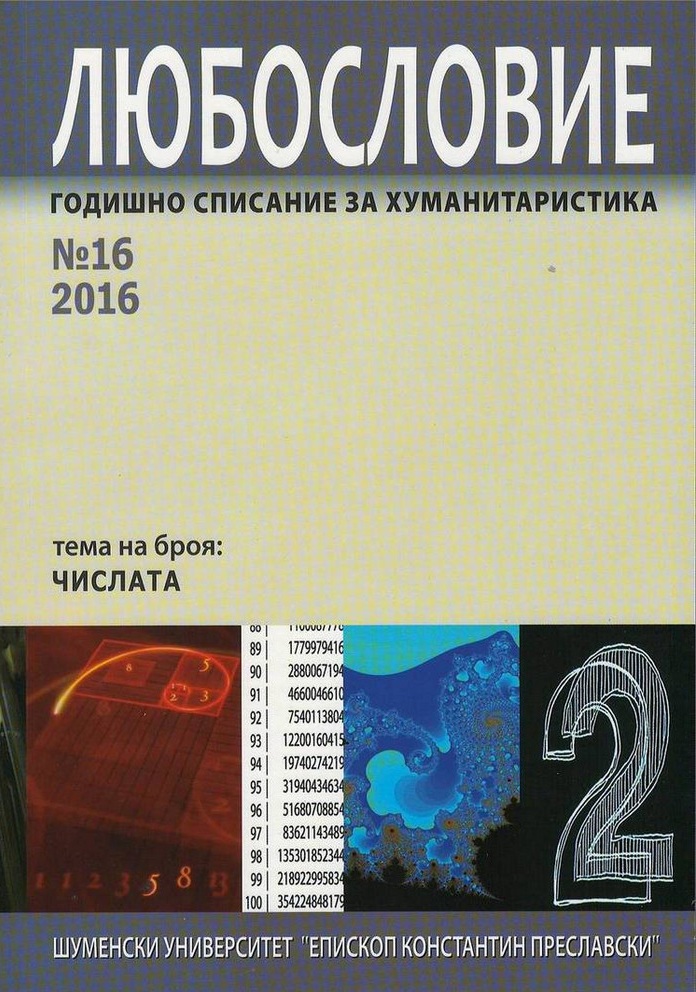Идеали, знаци, истории и илюзии на точността
Ideals, symbols, stories and illusions of the precision
(Mathematical, statistical and quantitative methods in the literary studies - the end of the 19th - early 20th century)
Author(s): Yani MilchakovSubject(s): Language and Literature Studies, Literary Texts, Studies of Literature
Published by: Шуменски университет »Епископ Константин Преславски«
Keywords: literary studies; mathematical-oriented approaches; structural-semiotic interpretations; precision
Summary/Abstract: The article deals with the earliest mathematically-oriented approaches to the literary text. It presents the problems concerning the subject, goals and cognitive limits of the mathematically-oriented poetics. The mathematical inspirations of the modern poetry that illustrate some numerological concepts are also analyzed, especially the obvious ones in the works of Stéphane Mallarmé and Velimir Khlebnikov. The paper recalls the theoretical heritage of rarely mentioned today researchers from the late 19th and early 20th century, such as Moritz Drobisch and Wincenty Lutoslawski. Drobisch wrote the first statistical description of the ancient prosody. Lutoslawski set up the basics of stylometry and by means of 500 items, called stylemmas, used this method to reconstruct the chronology of Plato’s Dialogues. Generally speaking, the first mathematical approaches to the literature did not constitute an integral scientific trend. They were rather individual practical insights partially included in the overall methods of positivism, based on the ideal of precision and rationality. They presupposed that literature must be studied and interpreted by empirical experiments, accurate data and provable definitions of universal regularities. Although undoubtedly influenced by the positivism of the 19 th century, mathematical methods in literary studies were not isolated from the overall artistic culture of that time. The aura of symbolism, decadence, modernism and Belle Époque were born. They all together showed the split between the limitation of accuracy of the mathematical data and the beautiful infinity of mathematical objects and symbols. Therefore, the article emphasizes the role of cmathematical methods among the first structural-semiotic interpretations.
Journal: Любословие
- Issue Year: 2016
- Issue No: 16
- Page Range: 9-29
- Page Count: 21
- Language: Bulgarian

